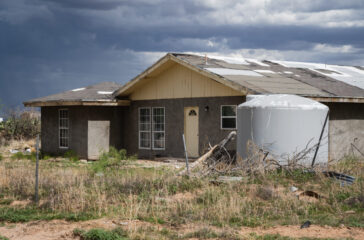By Shannon Kelleher
Growing up in south Texas, 25-year-old Joaquin Duran always wondered what it would be like to have running water. Before he was born, Duran’s parents moved from Juarez, Mexico to a small community called Cochran that lies within El Paso County. They hoped the enclave of Mexican-American families would be a safe place to raise their children and offer advantages not easily attained in Mexico.
The plot of land Duran’s parents purchased in Texas lacked running water when they settled in, but they were promised service was coming – only a year or two away. The family decided the wait would be worthwhile and they made the plot their home. During the day, Duran’s mother would scrub old concrete off the cinder blocks her husband retrieved from demolition work through his construction job. At night, they built their house from the salvaged materials.
Now, a quarter century later, water still has not arrived – for the Durans or for anyone else in the dry, dusty community of Cochran.
“My parents would protest and go to water district meetings,” said Duran. “They would be told, ‘Yes, you’re getting the water soon.’ All these promises. But in the end, nothing would happen.”
The long wait may be about to end.
 EWG
EWG




